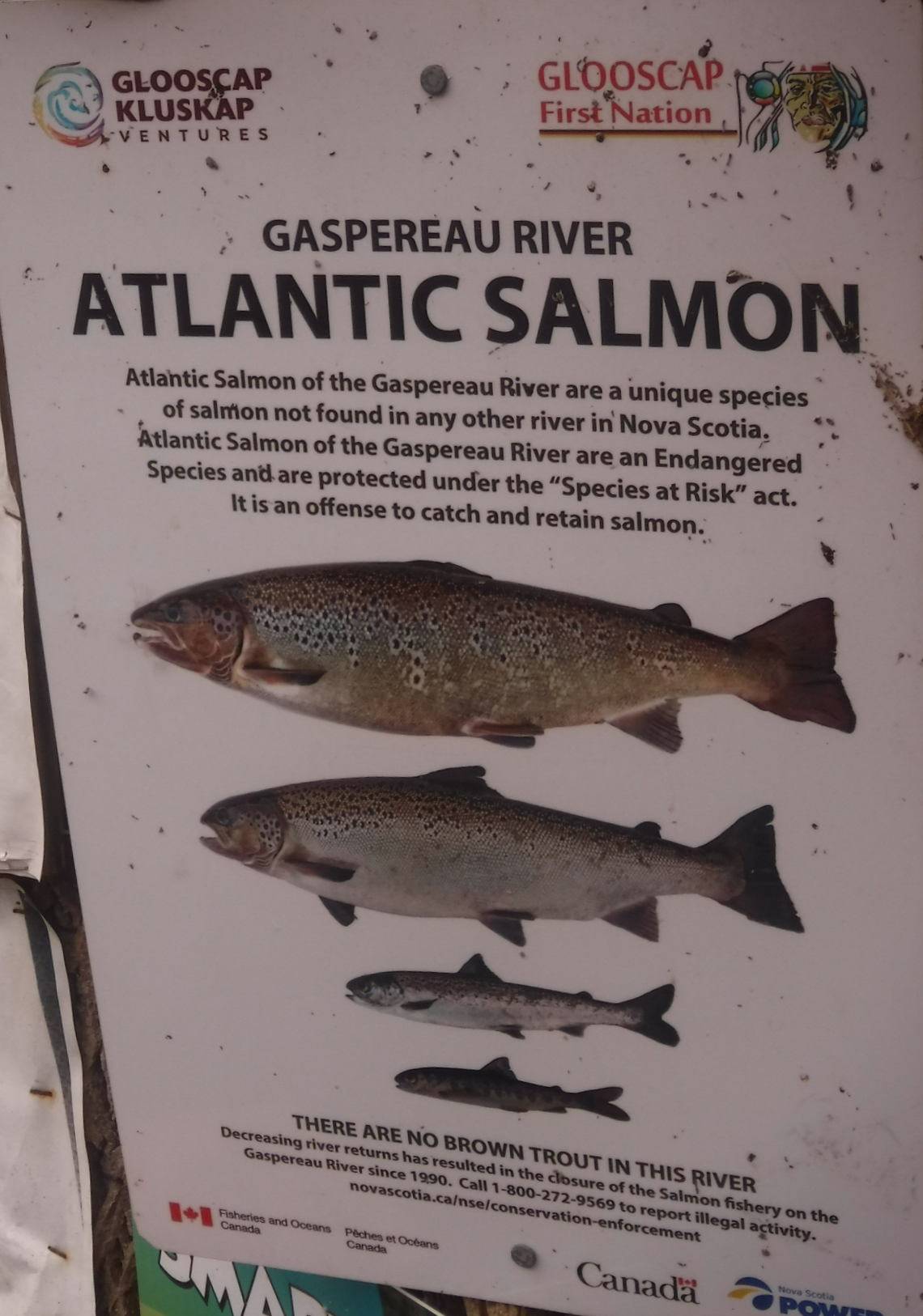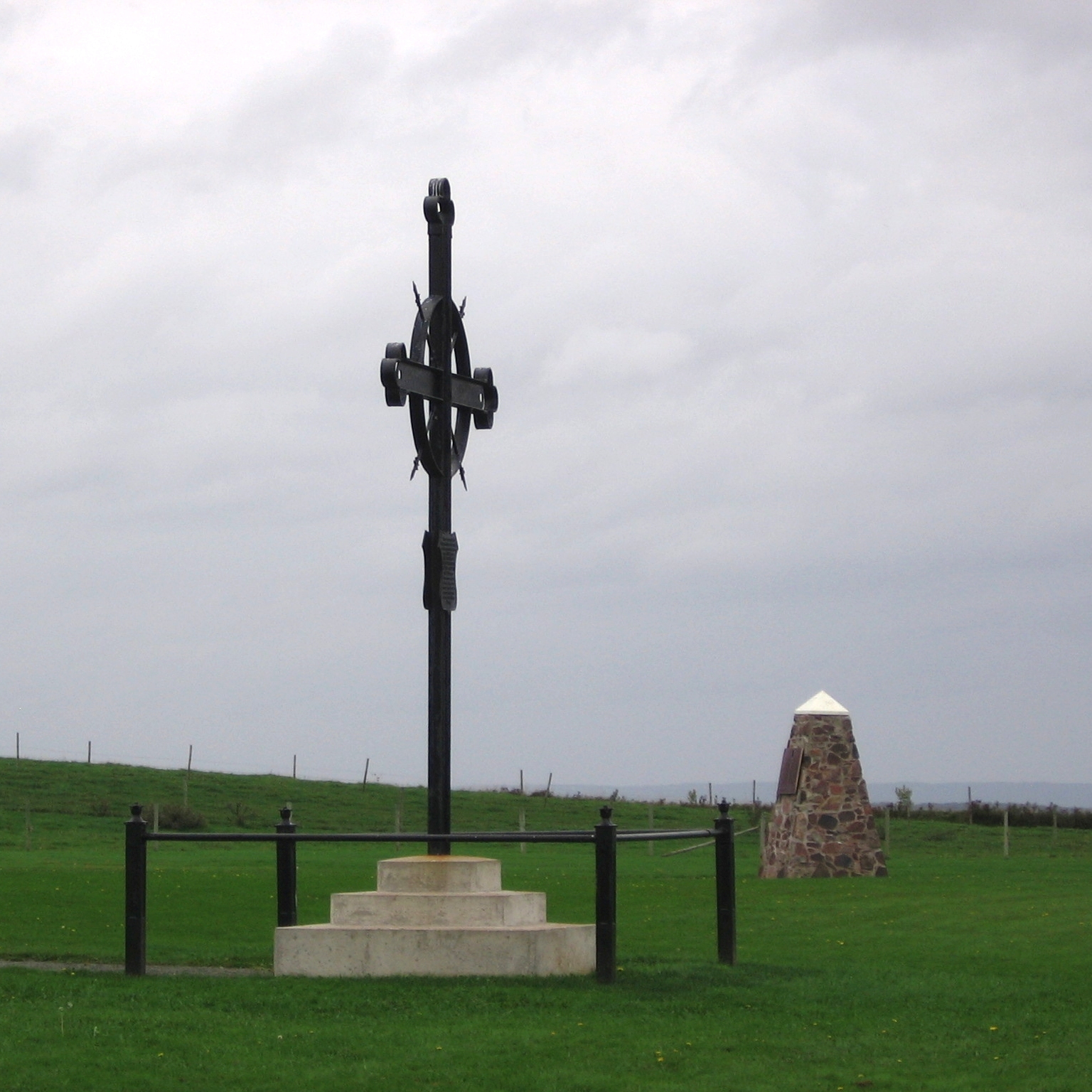|
Gaspereau River
The Gaspereau River is a river in Kings County, Nova Scotia, Canada. It has a length of approximately 24 km from its source at Gaspereau Lake on the South Mountain south of Kentville to its mouth at Hortonville on the Minas Basin. The lower portion of the river is tidal for 6.5 km until Melanson and there are extensive tidal marshes in the lower reaches. The upper 16 km runs swiftly over gravel beds, boulders and bedrock, except for several dammed sections which form narrow and deep channels. Damming for Hydroelectric generation has resulted in twelve major lakes being connected to the river creating a watershed of 1,375 square kilometres. A major tributary is the Black River which joins the Gaspeareau at White Rock. The Black River once flowed further north into the Cornwallis River but connected to the Gaspereau through a natural erosion process known as river capture. Fishery Although the Gaspereau is a short river, the riverbed habitat and connecting lakes fo ... [...More Info...] [...Related Items...] OR: [Wikipedia] [Google] [Baidu] |
Canada
Canada is a country in North America. Its ten provinces and three territories extend from the Atlantic Ocean to the Pacific Ocean and northward into the Arctic Ocean, covering over , making it the world's second-largest country by total area. Its southern and western border with the United States, stretching , is the world's longest binational land border. Canada's capital is Ottawa, and its three largest metropolitan areas are Toronto, Montreal, and Vancouver. Indigenous peoples have continuously inhabited what is now Canada for thousands of years. Beginning in the 16th century, British and French expeditions explored and later settled along the Atlantic coast. As a consequence of various armed conflicts, France ceded nearly all of its colonies in North America in 1763. In 1867, with the union of three British North American colonies through Confederation, Canada was formed as a federal dominion of four provinces. This began an accretion of provinces an ... [...More Info...] [...Related Items...] OR: [Wikipedia] [Google] [Baidu] |
Tomcod
''Microgadus tomcod'', also commonly known as frostfish, Atlantic tomcod or winter cod, is a type of cod found in North American coastal waters from the Gulf of St. Lawrence, St. Lawrence River and northern Newfoundland, south to Virginia. The fishing season of the tomcod varies by location—one known example is the Sainte-Anne River in Quebec, where its season is from late-December to mid-February. A bimonitoring program tracked hormone levels of Atlantic tomcod caught near Miramichi and Kouchibouguac in 1993 and 1994, demonstrating that the preparatory period for spawning began in September with maximal steroid levels in November, and spawning took place from late December to January. The town of Sainte-Anne-de-la-Pérade is notable for its fishing village built on the frozen waters of the Ste-Anne, playing host to the scores of fishermen visiting the town to fish for the species. After General Electric dumped polychlorinated biphenyls (PCBs) in the Hudson River from 1947 ... [...More Info...] [...Related Items...] OR: [Wikipedia] [Google] [Baidu] |
Vineyards
A vineyard (; also ) is a plantation of grape-bearing vines, grown mainly for winemaking, but also raisins, table grapes and non-alcoholic grape juice. The science, practice and study of vineyard production is known as viticulture. Vineyards are often characterised by their ''terroir'', a French term loosely translating as "a sense of place" that refers to the specific geographical and geological characteristics of grapevine plantations, which may be imparted to the wine itself. History The earliest evidence of wine production dates from between 6000 and 5000 BC. Wine making technology improved considerably with the ancient Greeks but it wasn't until the end of the Roman Empire that cultivation techniques as we know them were common throughout Europe. In medieval Europe the Church was a staunch supporter of wine, which was necessary for the celebration of the Mass. During the lengthy instability of the Middle Ages, the monasteries maintained and developed viticultural prac ... [...More Info...] [...Related Items...] OR: [Wikipedia] [Google] [Baidu] |
Tubing (recreation)
Tubing, also known as inner tubing, bumper tubing, towed tubing, or kite tubing, is a recreational activity where an individual rides on top of an inner tube, either on water, snow, or through the air. The tubes themselves are also known as "donuts" or "biscuits" due to their shape. Variations Water Tubing on water generally consists of two forms: towed and free-floating, also known as river tubing. There is also water skiing. According to ''Time Magazine'', tubing was purportedly invented on the Black River in Missouri by Jan & Harriet Wright of Poplar Bluff, MO sometime in the middle of the 20th century, but examples of the practice were published as early as 1916, when the popularization of the automobile meant a large supply of rubber inner tubes was available to the general public. Towed tubing usually takes place on a large body of water such as a lake or river. One or more tube riders (often called "tubers") tether their tubes to a powered watercraft such as a motor ... [...More Info...] [...Related Items...] OR: [Wikipedia] [Google] [Baidu] |
Avon River, Nova Scotia
__NOTOC__ The Avon River is a small river in central Nova Scotia, Canada. A northerly flowing river, the Avon River's flow rises at an elevation of 145 metres (475 ft.) at Card and Bag Lakes on the South Mountain, a distance of approximately 29 kilometres (18 miles) southwest of the town of Windsor. Its meander length is . At Windsor Forks the main tributary, the West Branch Avon River, adds its flow, along with that of the Southwest Branch Avon, to the Avon. The West Branch Avon River rises at an elevation of 175 metres (574 ft.) at Black River Lake. Both the flows of the Avon and the West Branch have been impeded by hydropower developments in the early twentieth century. Near the rural community of Martock, the river enters a broad glacial river valley forming a ria where it becomes tidal, creating an estuary for its remaining route to the Minas Basin at Kempt Shore, several kilometres downriver from the town of Hantsport. Another tributary, the St. Croix River join ... [...More Info...] [...Related Items...] OR: [Wikipedia] [Google] [Baidu] |
White Rock, Nova Scotia
White Rock is a community in Kings County, Nova Scotia near the town of Wolfville. The Stiver's Falls Hydroelectric Plant, also known as the old White Rock generating station, was built nearby in 1919 on the Gaspereau River, about 3 km south-west of Wolfville, and produced electricity for the first time on 25 February 1920. It had a capacity of 375 horsepower 280 kilowatts. The original machinery was replaced in 1950 with a 3,600 kW generating plant, and the dam replaced in 1994. Notable residents * The Goler clan are a clan of poor, incestuous rural families in Canada, known for inter-generational poverty and the conviction in the 1980s of a large number of family members for sexual abuse and incest. * Justin Schofield was named the top pitcher of the tournament at the Canadian senior men's softball championship in Quebec in 2015. Weather See also * Goler clan The Golers are a clan of poor, rural families in Canada, on Nova Scotia's South Mountain, near Wolfville ... [...More Info...] [...Related Items...] OR: [Wikipedia] [Google] [Baidu] |
Expulsion Of The Acadians
The Expulsion of the Acadians, also known as the Great Upheaval, the Great Expulsion, the Great Deportation, and the Deportation of the Acadians (french: Le Grand Dérangement or ), was the forced removal, by the British, of the Acadian people from parts of a Canadian-American region historically known as ''Acadia'', between 1755–1764. The area included the present-day Canadian Maritime provinces of Nova Scotia, New Brunswick, and Prince Edward Island, and the present-day U.S. state of Maine. The Expulsion, which caused the deaths of thousands of people, occurred during the French and Indian War (the North American theatre of the Seven Years' War) and was part of the British military campaign against New France. The British first deported Acadians to the Thirteen Colonies, and after 1758, transported additional Acadians to Britain and France. In all, of the 14,100 Acadians in the region, approximately 11,500 were deported, at least 5,000 Acadians died of disease, starva ... [...More Info...] [...Related Items...] OR: [Wikipedia] [Google] [Baidu] |
New England Planters
The New England Planters were settlers from the New England colonies who responded to invitations by the lieutenant governor (and subsequently governor) of Nova Scotia, Charles Lawrence, to settle lands left vacant by the Bay of Fundy Campaign (1755) of the Acadian Expulsion. History Eight thousand Planters (roughly 2000 families), largely farmers and fishermen, arrived from 1759 to 1768 to take up the offer. The farmers settled mainly on the rich farmland of the Annapolis Valley and in the southern counties of what is now New Brunswick but was then part of Nova Scotia. Most of the fishermen went to the South Shore of Nova Scotia, where they got the same amount of land as the farmers. Many fishermen wanted to move there, especially since they were already fishing off the Nova Scotia coast. The movement of some 2000 families from New England to Nova Scotia in the early 1760s was a small part of the much larger migration of the estimated 66,000 who moved to New York's Mohaw ... [...More Info...] [...Related Items...] OR: [Wikipedia] [Google] [Baidu] |
Acadians
The Acadians (french: Acadiens , ) are an ethnic group descended from the French who settled in the New France colony of Acadia during the 17th and 18th centuries. Most Acadians live in the region of Acadia, as it is the region where the descendants of a few Acadians who escaped the Expulsion of the Acadians (aka The Great Upheaval / ''Le Grand Dérangement'') re-settled. Most Acadians in Canada continue to live in majority French-speaking communities, notably those in New Brunswick where Acadians and Francophones are granted autonomy in areas such as education and health. Acadia was one of the 5 regions of New France. Acadia was located in what is now Eastern Canada's Maritime provinces, as well as parts of Quebec and present-day Maine to the Kennebec River. It was ethnically, geographically and administratively different from the other French colonies and the French colony of Canada (modern-day Quebec). As a result, the Acadians developed a distinct history and culture. ... [...More Info...] [...Related Items...] OR: [Wikipedia] [Google] [Baidu] |
Mi'kmaq People
The Mi'kmaq (also ''Mi'gmaq'', ''Lnu'', ''Miꞌkmaw'' or ''Miꞌgmaw''; ; ) are a First Nations in Canada, First Nations people of the Indigenous peoples of the Northeastern Woodlands, Northeastern Woodlands, indigenous to the areas of Canada's Atlantic Canada, Atlantic Provinces and the Gaspé Peninsula of Quebec as well as the northeastern region of Maine. The traditional national territory of the Mi'kmaq is named Miꞌkmaꞌki (or Miꞌgmaꞌgi). There are 170,000 Mi'kmaq people in the region, (including 18,044 members in the recently formed Qalipu First Nation in Newfoundland.) Nearly 11,000 members speak Miꞌkmaq language, Miꞌkmaq, an Eastern Algonquian languages, Eastern Algonquian language. Once written in Miꞌkmaq hieroglyphic writing, Miꞌkmaw hieroglyphic writing, it is now written using most letters of the Latin alphabet. The Mi'kmaq, Maliseet, and Passamaquoddy, Pasamaquoddy nations signed a series of treaties known as the Covenant Chain of Peace and Friendship ... [...More Info...] [...Related Items...] OR: [Wikipedia] [Google] [Baidu] |
Luckett Vineyards Gaspereau Valley Nova Scotia
Luckett or Lucketts may refer to: People *LeToya Luckett (born 1981), American musician and actress *Johnny Luckett, an American actor; see ''The Second Civil War'' *Phil Luckett, official in the National Football League *Jammes Luckett, American musician *Oliver Luckett (born 1974), American entrepreneur *Pete Luckett (born 1953), British-Canadian entrepreneur and media personality *Philip N. Luckett(c. 1823–1869), American soldier and physician * H.P. Luckett (1847–1925), American physician *Bill Luckett (1903–1985), English professional footballer * Lt. Col. William Thomas Luckett, Jr (1928-2000), US Air Force Officer and Vietnam Veteran Places *Lucketts, Virginia, United States **Lucketts School *Luckett, Cornwall Luckett is a hamlet in east Cornwall, England. It is situated in a former mining area beside the River Tamar approximately three miles (5 km) north of Callington. According to the Post Office the population at the 2011 census was included ..., United ... [...More Info...] [...Related Items...] OR: [Wikipedia] [Google] [Baidu] |






